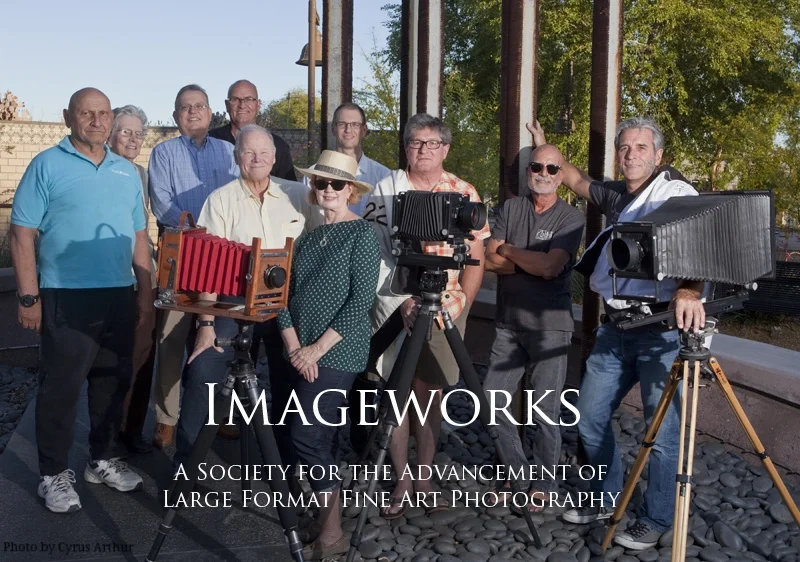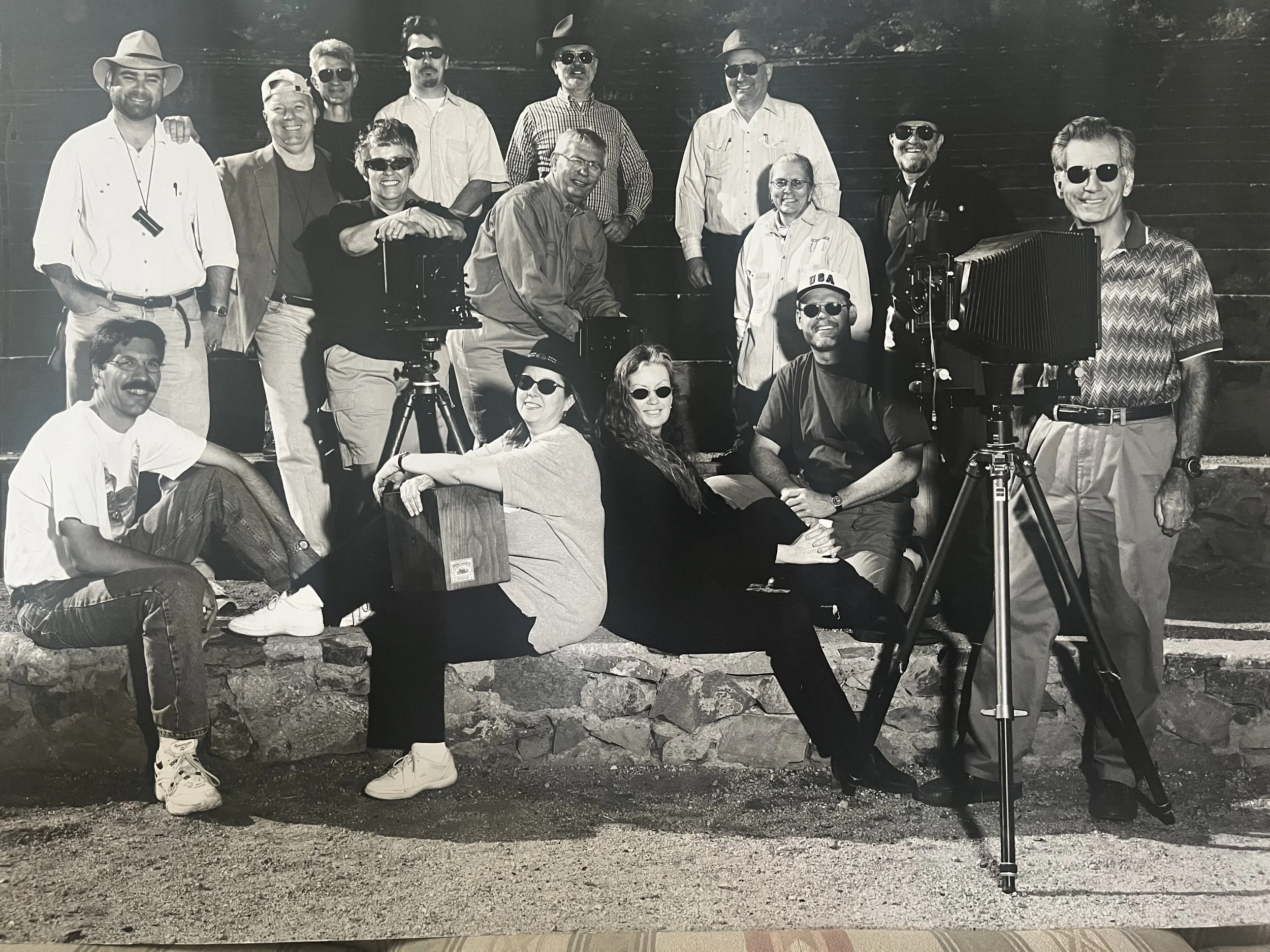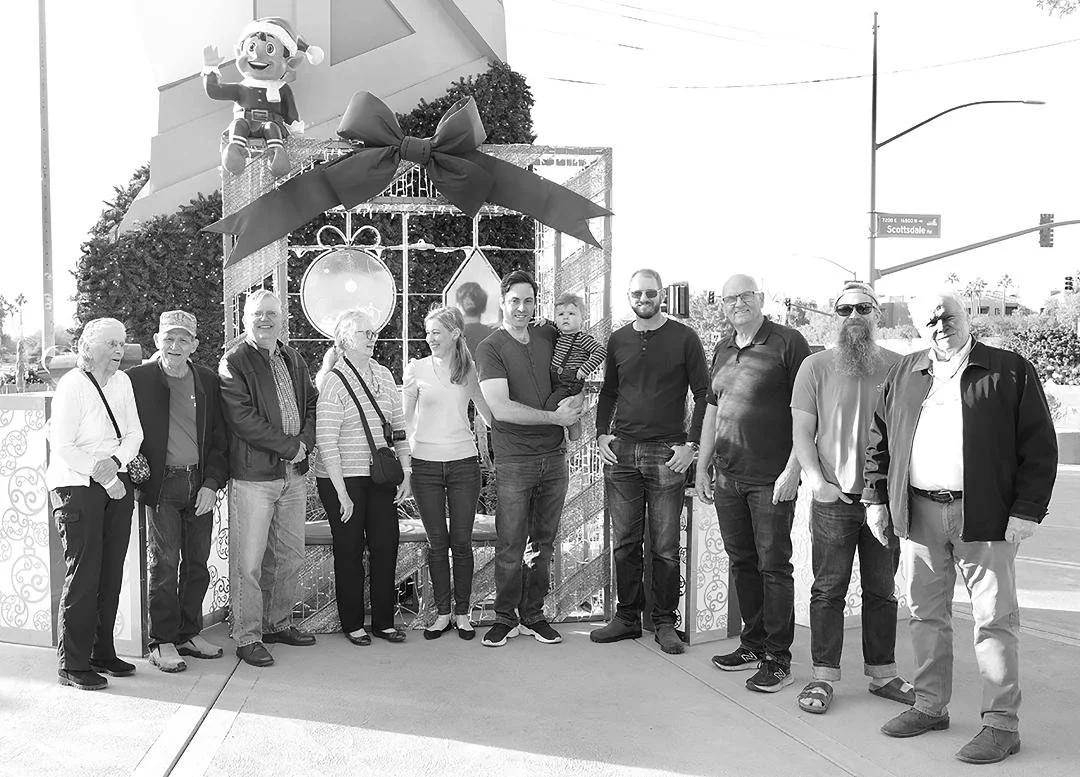Founded in 1998 by a group of large format photographers in the greater Phoenix area with a common interest in making the highest quality fine art photographic images. Limited to 25 individuals and by invitation only, Imageworks is an organization committed to excellence in this art form.
While many of our members pursue other photographic formats, it is the large format camera with its absolute perspective control, print quality and overall capabilities which allow the photographer to produce an image in his or her own unique style.
Some of our members photograph in the style of the great classic photographers of the twentieth century. Others produce images that use extensive hand manipulation and alternative historic processes. Still others are exploring the latest advances in chemistry and print production. Collectively, their work is an extensive representation of landscape, contemporary and classic portraiture, architecture, and still life compositions. Regardless of process, each member is encouraged to show new, finished work on a regular basis.
Please contact us for invitation qualifications or if you would like to arrange a speaker or an exhibit of our group.
For examples of the breadth of members’ work, please have a look at the Blurb book we created a few years ago.
Old Group Photos
What is Large Format Photography?
Large format describes photographic films and cameras (including pinhole cameras) that use sheets of film that are 4 x 5 inches in size or larger. The most common being 4×5, 5×7, and 8×10 inches. Less common formats include 11×14 inches up through 20x24 inches including panoramic or "banquet" formats (such as 4x10 and 8x20 inches).
These cameras share the following characteristics:
The film comes in separate sheets rather than rolls.
Flexible bellows connecting the front and rear of the camera, which allow the use of any large format lenses (there are no brand specific mounts or zoom lenses in large format), as well as providing for lateral and angular adjustments between film and lens planes.
Ground glass viewing which allows the photographer to view the image at full size, and not through a narrow viewfinder. This allows the photographer to better assess the composition. The ground glass also allows for more precise focusing of the image.
By contrast, Medium format cameras use roll-film which is 6cm wide so that the format available on those cameras are (all in cm) 4.5x6, 6x6, 6x7, 6x9, 6x12, 6x17. The vast majority of medium format cameras operate similar to 35mm cameras. On the other hand, with almost all the large format cameras it is possible to use roll- film holders of various sizes and to therefore produce medium-format images.
What are the main benefits of the large format camera?
Larger image size - Results are sharper, have a better tonality, and are grain- free, e.g. an 8x10inch negative has over 50 times the area of a 35mm negative. Contact printing gives an image whose delicacy cannot be matched by any enlargement, and allows for a number of alternative and historic printing techniques.
Camera movements - You have more control over the final geometry, perspective, and focus of the objects being photographed.
Individual sheets of film - You can use as many types of film as you like and process each sheet of film individually for optimum results, e.g. the use of Ansel Adams’ Zone System.
Large format requires a contemplative approach - This helps to insure that each image can achieve it’s full potential.
What are the main drawbacks of the large format camera?
Everything is manual. You need to remember to do things that were never an issue with even the most manual 35mm camera. Most 35mm and medium format cameras have some mechanized operations that we take for granted -- like preventing fogged film, double-exposures, and day light loading. As a result, it is much easier to make mistakes when using large format cameras.
Equipment and film: the equipment is bulky, heavy (a good tripod is necessary) and relatively expensive. The cost per photograph is considerably higher than the same image in the smaller formats. Think of it as being proportional to the film area.
Longer focal lengths are needed to achieve the same angle of view: The equivalent of a 24mm lens on a 35mm camera would be a 75/90 mm lens on a 4x5, 120mm lens on a 5x7, and 155/210mm lens on an 8x10. Because of this, depth of field is a serious problem. The cameras movements become necessary to put everything into focus, although some subjects cannot be brought into focus entirely, and smaller apertures are required. As a result you often get very long exposures, so movement from wind (esp. with vegetation) and reciprocity failure become a major consideration. Work which requires a natural high degree of magnification, i.e. macro and telephoto, is particularly impractical, the former because of the depth of field limitations, and the later, because the lenses would have to be exceedingly long.
What is the real gain compared to other formats?
As enlargements are concerned, a print from a large format negative is unique and has qualities that can only come from large format film. The difference between 4x5 and 35mm is substantial, although the difference between medium format and 4x5 will only show up on larger prints (16x20 and larger). On the other hand, a contact print has a special quality that some feel cannot be obtained by any enlargement.



